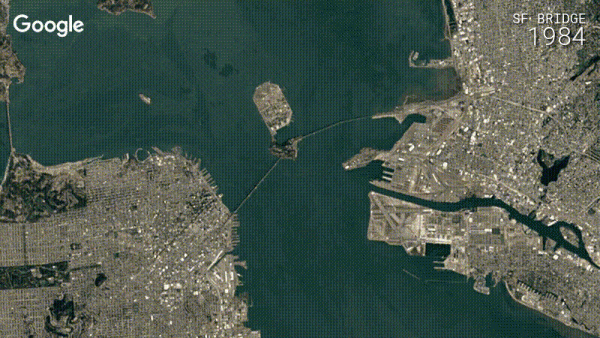History is an aggregate of past events, and at times, the best way to explain the present is to explore the past. Conforming to this idea, the team behind Google Earth released an update to its satellite imagery app’s Google Earth Time Lapse feature. The update allows you to access years of satellite, aerial, and street-view imagery to demonstrate the changes in the landscape over time.
Google Earth Time Lapse is a great way to trace the changes in the landscape. It’s fun watching cities and places develop as they morph in the images over the years. However, a more sensible and essential function of the Google Earth Time Lapse feature is to notice the way human-driven climate change has transformed our planet Earth in 32 years’ time.
How to use Google Earth Time Lapse

Google Earth Time Lapse is a feature of Earth Engine, a tool to organize geospatial information and make it available for analysis. The engine is free for research, education, and nonprofit use. For commercial applications, Google offers paid commercial licenses for appropriate use cases.
The latest update to the time-lapse feature adds another four years of data. Besides, it also supports petabytes of high-resolution imagery from two new satellites,
- Landsat 8 (It covers their full operational lifetimes, with over four million unique scenes over 35 years)
- Sentinel-2 (provide an unprecedented view of our Earth, covering all of the Earth’s land masses, large islands, and waterways)
To use Google Earth Time Lapse, you have to start using the Google Earth website.
Here, you can see the interactive ‘Timelapse’ page. It is very similar to Google Earth but displays a draggable timeline and a “play” button.
You can select a location by clicking anywhere on the screen and dragging the cursor to the desired location. Next, you can zoom in, if necessary.
Now, hit the play button in the lower-left hand corner of the screen to see the timeline lapse.

If the speed of the lapse feature is too fast, you can change it to ‘Slow’ or ‘Medium’ by hitting the tab below the ‘Play’ button and selecting the desired option.
Google, by default, has highlighted a few places in its blog post. Let us know what you think of this.
This post will help you if Google Earth is not working on Windows PC.